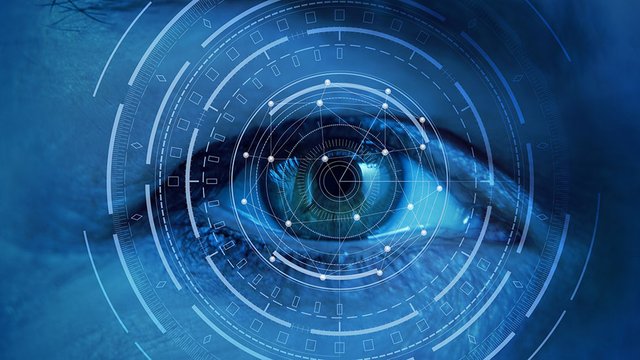“Once more unto the firehose my friends, once more unto the firehose”
(apologies, Will)
24 May 2019 (Cannes Film Festival, France) – As my regular readers know (shout out to my Cannes crowd receiving this for the first time) I am an opsimath at heart. And I think everything in technology is related in multiple ways so my year is an esoteric collection of events and conferences that provide me perspective and a holistic tech education. To be an informed citizen is a daunting task. To try and understand the digital technologies associated with Silicon Valley — social media platforms, big data, mobile technology and artificial intelligence that are increasingly dominating economic, political and social life – has been a monumental undertaking that has brought me to interview scores of advertising mavens, data scientists, data engineers, social media techies, psychologists, etc. Plus reading reams of white papers and stacks of books tracking the evolving thinking and development of these technologies.
My focus has been on two mega areas:
– the many plans proposed to regulate social media which are the equivalent of putting a band aid on a bullet wound. And just as futile (you can read part 1 of my series here)
– the geopolitical war over 5G, AI and facial recognition technology (the second part of this post is my opening salvo)
One of the big ideas over the last two years in the discussions over the futility of regulating social media has been the “Dark Forest Theory” of the Internet. You know all about this if you’ve read any of the “long reads” or books by folks like Franklin Foer, Alexander Klimburg, Susan Landau, Yancey Strickler and others. Before I move onto 5G, AI and facial recognition technology a few thoughts on the “Dark Forest”.
Let me summarise Yancey Strickler who started the theory and gets to the nub:
Imagine a dark forest at night. It’s deathly quiet. Nothing moves. Nothing stirs. This could lead one to assume that the forest is devoid of life. But of course, it’s not. The dark forest is full of life. It’s quiet because night is when the predators come out. To survive, the animals stay silent.
Is our universe an empty forest or a dark one? If it’s a dark forest, then only Earth is foolish enough to ping the heavens and announce its presence. The rest of the universe already knows the real reason why the forest stays dark. It’s only a matter of time before the Earth learns as well.
This is also what the internet is becoming: a dark forest.
It’s not just Facebook’s recent moves to get rid of the news feeds, and expand private groups. It is the general response to the ads, the tracking, the trolling, the hype, and other predatory behaviors that is making us retreat to the dark forests of the internet, away from the mainstream.
Example: I have a private channel in the cloud, set up via Linux, access given to 3,500 people who I know or who have explicitly chosen to receive it. The post you are reading now goes to my “public list”, about 25,000 subscribers. But it is on my private channel I feel most secure. Where I can be my most “real self”. Not that I hold much back in these public posts.
You cannot find my channel, it cannot be indexed by Google or anybody else.
I am not alone. For a perverse example, hundreds of alt-right organizations have set up Linux servers in the cloud, sending out Tweets and Facebook posts with links to give people access, via coded messages. People are setting up hundreds of web pages, all outside any monitoring or regulation. Hundreds of tiny pirate kingdoms.
As Franklin Foer explains, these are all spaces where depressurized conversation is possible because of their non-indexed, non-optimized, and non-gamified environments. And they still use Facebook and Twitter to distribute access, coded to avoid the filters (I will explain how that works when I continue my social media regulation series).
There are other dark forests, like Slack channels, private Instagrams, invite-only message boards, text groups, Snapchat, WeChat, and on and on. This is where Facebook is pivoting with Groups (and trying to redefine what the word “privacy” means in the process).
The internet of today is a battleground. Said Klimburg in a recent blog post:
The idealism of the ’90s web is gone. The web 2.0 utopia — where we all lived in rounded filter bubbles of happiness — ended with the 2016 Presidential election when we learned that the tools we thought were only life-giving could be weaponized too. The public and semi-public spaces we created to develop our identities, cultivate communities, and gain knowledge were overtaken by forces using them to gain power of various kinds (market, political, social, and so on).
This is the atmosphere of the mainstream web today: a relentless competition for power. As this competition has grown in size and ferocity, an increasing number of the population has scurried into their dark forests to avoid the fray.
The web 2.0 era has been replaced by a new “Web²” era. An age where we simultaneously live in many different internets, whose numbers increase hourly. The dark forests are growing. Technology always runs miles ahead of regulation.
And dark forests grow because they provide psychological and reputational cover. They allow us to be ourselves because we know who else is there. As Strickler wrote:
Compared to the free market communication style of the mass channels — with their high risks, high rewards, and limited moderation — dark forest spaces are more Scandinavian in their values and the social and emotional security they provide. They cap the downsides of looking bad and the upsides of our best jokes by virtue of a contained audience. This is a trade more and more people are looking to make.
I started going dark on the internet earlier this year. I took many social apps off my phone, unfollowed everyone, the whole shebang. I expect to be off all social media by summer’s end (you’ll still see me; my media team will be posting my work).
But that has more to do with a desire to deep-read. Yes, Twitter has made me more knowledgeable about politics in general … and perhaps a little too knowledgeable about American politics in particular. It has also been a fertile source of long-form journalism, which I download to Pocket and read offline. My chief technology officer has fashioned an AI that will still make those downloads possible without me needing to access any social media platform.
But I found my ability to focus on one task for a sustained period had deteriorated since I became addicted to that repeated swipe from one vaguely interesting thing to what promises to be, but rarely is, a slightly more interesting thing. More importantly, my retreat is due to a growing sense that it was detrimentally affecting the way I both looked at and thought about the world around me, even when I was away from a screen.
More in a post to come. Let’s move on ….
During my last trip to Ukraine a few weeks ago (my third trip), the focus was on the sophistication of Russia’s disinformation campaigns. Of all the things I learned from the Mueller Report the most surprising was that the U.S. intelligence agencies had their first major intelligence breakdown in this new “information war” era: the complete failure to identify and fully grasp the magnitude of Russia’s use of social media. They totally missed Russia’s most important tool: the weaponization of social media. The Russian “information war machine” is simply incredible. My media team is working on a detailed post.
But I was there at the invitation of a cyber security vendor, a long-time client and one of the top cyber companies in the world. So we talked about the physics of 5G, how this next generation of Internet connectivity is going to take cyberattacks to “Force 5” (today’s attacks will look like child’s play) and the related challenges of AI and facial recognition technology.
Two words explain the difference between our current wireless networks and 5G: speed and latency. 5G is expected to be up to a hundred times faster (a two-hour movie could be downloaded in less than four seconds). That speed will reduce, and possibly eliminate, the delay – the latency – between instructing a computer to perform a command and its execution.
The problem is that it will lead to the accelerated adoption … and a whole new level … of the Internet of Things. And this totally connected-world-to-come will also be especially susceptible to cyberattacks, at hyper levels. Said my host : “few companies, few people are grasping the completely different cyber threat … one we’ve never experienced before.”
We have a monster 5G post coming out this summer … video interviews, graphics, etc. … to put all of this in perspective. But I want to note a few things in this post about the big gorilla in the room – China.
When discussing China, the world is fixed on Huawei and China’s building of a techno-dystopian surveillance state at home. And its success in exporting that technology. There is much more at stake.
Washington’s rush to develop AI is driven by a fear of falling behind China, which is already a global powerhouse in AI. The Chinese technology giants Alibaba, Baidu, and Tencent rank right alongside Amazon, Google, and Microsoft as leading AI companies. Five of the ten AI start-ups with the most funding last year were Chinese. Ten years ago, China’s goal of becoming the global leader in AI by 2030 would have seemed fanciful; today, it’s a real possibility.
These capabilities will dramatically enhance the performance of mobile data networks by enabling new types of machine-to-machine communication, paving the way for next-generation digital applications that require highly reliable, near-instantaneous access to massive amounts of data. 5G is what will make driverless cars, smart cities, and other large-scale applications of connected devices feasible on a commercial scale.
But 5G’s integral role in these transformational technologies means that to a much greater extent than with 4G, the development and deployment of the next-generation network is being influenced by political concerns, even as information and communications technology companies, firms in affected sectors such as manufacturing and automobiles, and entire national industries jockey for position in the emerging ecosystem. Specifically, as the trade and technology confrontation between the US and China has steadily escalated over the past year, driven by US economic and national security concerns and by China’s ambitious industrial, technological, and economic development goals, every major issue associated with 5G networks has become politicized.
Most alarming for U.S. policymakers is the sharp divide between Washington and Silicon Valley over the military use of AI. Employees at Google and Microsoft have objected to their companies’ contracts with the Pentagon, leading Google to discontinue work on a project using AI to analyze video footage. Also in this silo is the recent press about the push back of facial recognition technology in San Francisco and other U.S. cities.
Oh to be 25 and idealistic again. Boys and girls, there is a war on and any country not getting into this fight will suffer badly. China’s authoritarian regime doesn’t permit this kind of open dissent. Its model of “military-civil fusion” means that Chinese technology innovations will translate more easily into military gains. Even if the United States keeps the lead in AI, for awhile, it could lose its military advantage.
Machine-learning systems are only ever as good as their training data. If the data don’t represent the system’s operating environment well, the system can fail in the real world. As regards facial recognition technology, we all know the machine-learning system studies done by MIT Media Lab last year that showed the three leading facial recognition systems in the West were far worse at classifying dark-skinned faces than they were at classifying light-skinned ones.
Not the Chinese. Because they have bought hundreds of data bases with dark-skinned faces (estimated to total almost 1 billion photos) and their technology is greatly superior. Nobody else in the world has the level of data the Chinese now own.
But even if the creators of deep-learning systems to protect its data sources, the system can still be tricked using what are known as “adversarial examples,” in which an attacker feeds the system an input that is carefully tailored to get the machine to make a mistake. I have written about this extensively, and will do as this series continues. The Chinese have come up with some novel solutions.
CONCLUSION
My long view on the two points above? Well, two points:
1. We are heading toward three internets: the digital swamp made by Google and Facebook, the “Dark Forest”, and a quantum internet made by the Chinese
2. Formerly dry, technical subjects such as standards-setting and spectrum allocation for 5G networks, the location of supply chains, how to protect the next generation of mobile data networks from cyber threats, and which companies build 5G infrastructure and handsets in which countries will acquire an importance very few people are absorbing.
Did I cut that too short? Sorry. I’ll have more. But right now it’s the last day of the free digital film technology workshops here at the Festival so I need to get cracking.
And to my U.S. readers, have a pleasant Memorial Day weekend:



